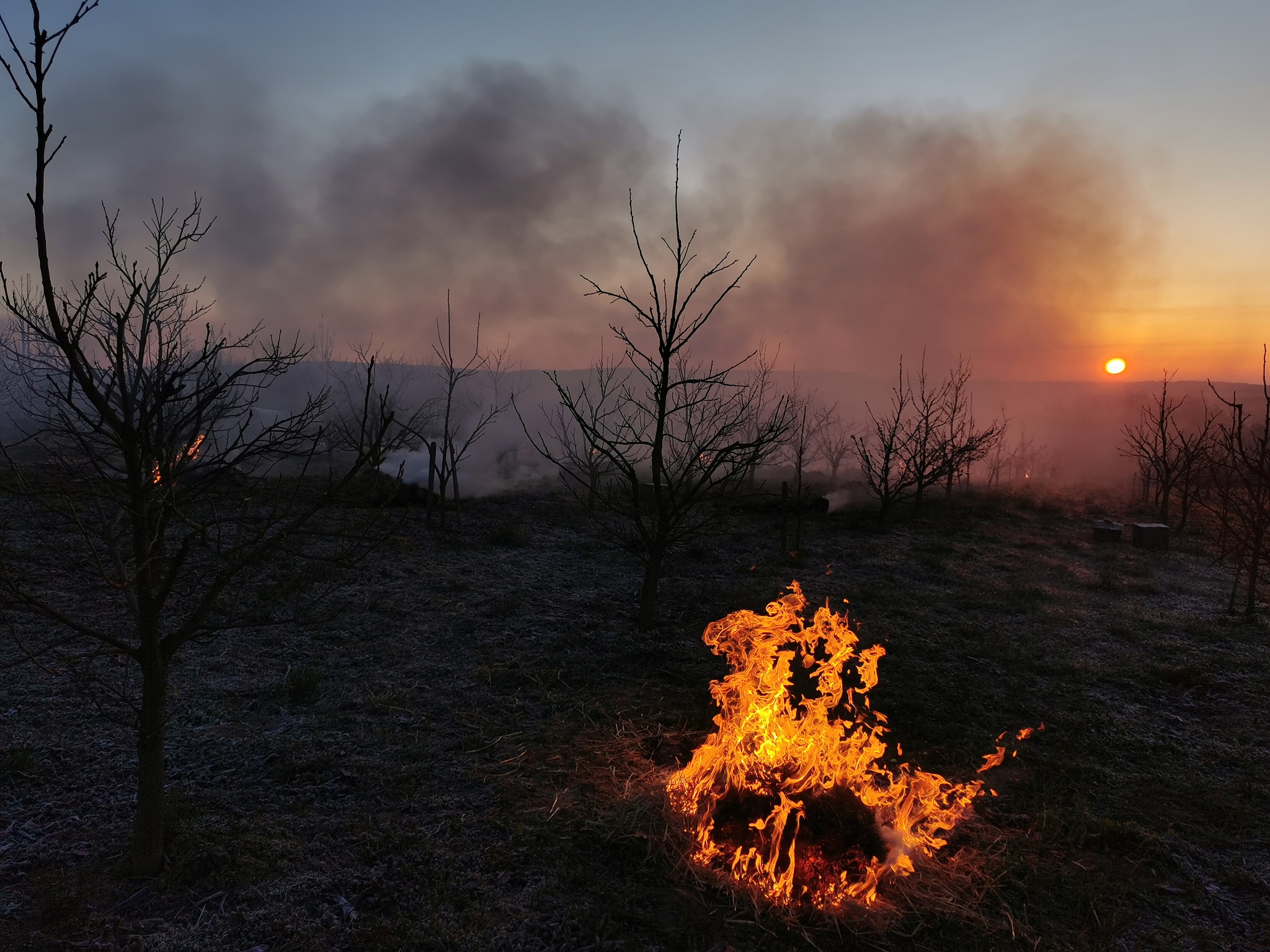Firefighters intervened in more than five hundred cases due to Monday’s storm: mostly due to trees falling on roads and buildings, damaged roofs and utilities in several counties of the country, the deputy spokesman of the National Directorate General for Disaster Management (OKF) told MTI on Tuesday morning. A warning is still out: after easing on Monday night, the northwest winds became gusty again from the morning hours on Tuesday, gradually losing strength from Tuesday evening.
Most of the incidents requiring assistance were in the capital and in the counties of Pest, Somogy, Fejér, Szabolcs-Szatmár-Bereg, and Borsod-Abaúj-Zemplén.
In more than seventy cases, firefighters had to assist at damaged buildings due to the storm. In fifteen places, power lines were either downed by the stormy winds or from fallen trees and were removed by the experts. The roofs of several dwellings were damaged by the gale-force winds, and the roof of one rural house was demolished. In addition, trees fell in the stormy weather, including one on a car on Highway 1, and firefighters had to use a crowbar to rescue the driver.
According to the OKF, “as strong wind warnings have been issued for several counties on Tuesday, it is still recommended to drive with caution near trees, tree-lines, scaffolding, and if possible, not to park under trees and to follow the forecasts and warnings of the Meteorological Service.”
The gale-force winds did not spare the train networks either, with overhead lines damaged in several places in the western part of the country on Monday afternoon and trees falling on the railway tracks, hampering train services. Fortunately, by the evening, traffic had resumed in most places.
Due to the extreme weather conditions, a speed limit was also introduced on the M7 motorway at the Kőröshegy Viaduct, restricting drivers to 80 kilometers per hour due to strong winds.
As it turned out later, a lorry overturned on the viaduct in question, on the way to Letenye.
Budapest was not spared by the gale-force winds either, with a 15-meter tree in the Szilágyi Erzsébet road in the XII district toppling over and falling onto another tree, endangering motor traffic. In Bartók Béla Street in the XI district, pieces of sheet metal were torn off the roof of a three-story building.
The National Meteorological Service reported that winds on Kab Hill, not far from Lake Balaton in the western part of the country, gusted at almost 120 kilometers per hour on Monday afternoon. The second strongest wind was at Balatonőszöd, near the Kőröshegy Viaduct, at 117.4 kilometers per hour.
Meanwhile, besides the stormy wind, night freezes are expected to cause another problem for Hungarians. With a cold front entering the country, the temperature is only 8-10 degrees Celsius during the day, and frost is expected on Tuesday and Wednesday night, with temperatures falling below 0 degrees Celsius, reaching minus 7 or even minus 10 degrees Celsius at dawn in several parts of the country. Snow even started to fall on Monday at Kékestető, the highest point of Hungary.
Havazás váltotta fel az esőt Kékestetőn, elkezdett fehéredni a hegycsúcshttps://t.co/9jYTnHdjSL pic.twitter.com/ciopylAbTk
— Időkép (@idokep) March 27, 2023
Since it is already spring, and the March weather has been mild so far, fruit trees and other plants have started to bloom, and so the frost could cause great damage to farmers. Everybody is worried that in addition to almonds and apricots, peaches have also already blossomed, and the flower buds of apples and pears are also very swollen. In order to prevent frost damage, farmers typically set fires in the plantations to keep the ground and air warm.

Photo: Facebook/Harcz Endre – kertészet, különleges növények
Featured photo via Facebook/Kisalföld Sopron